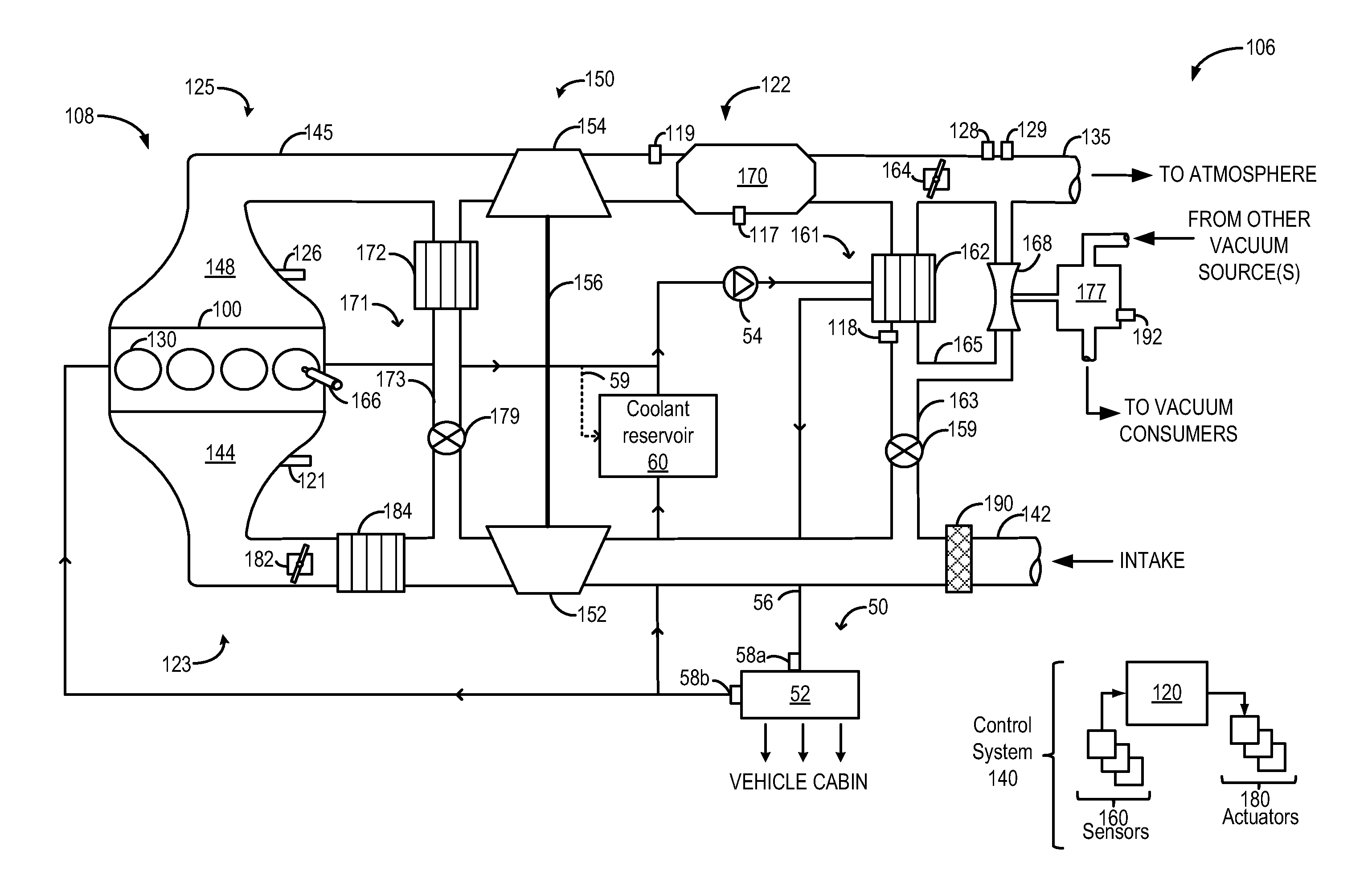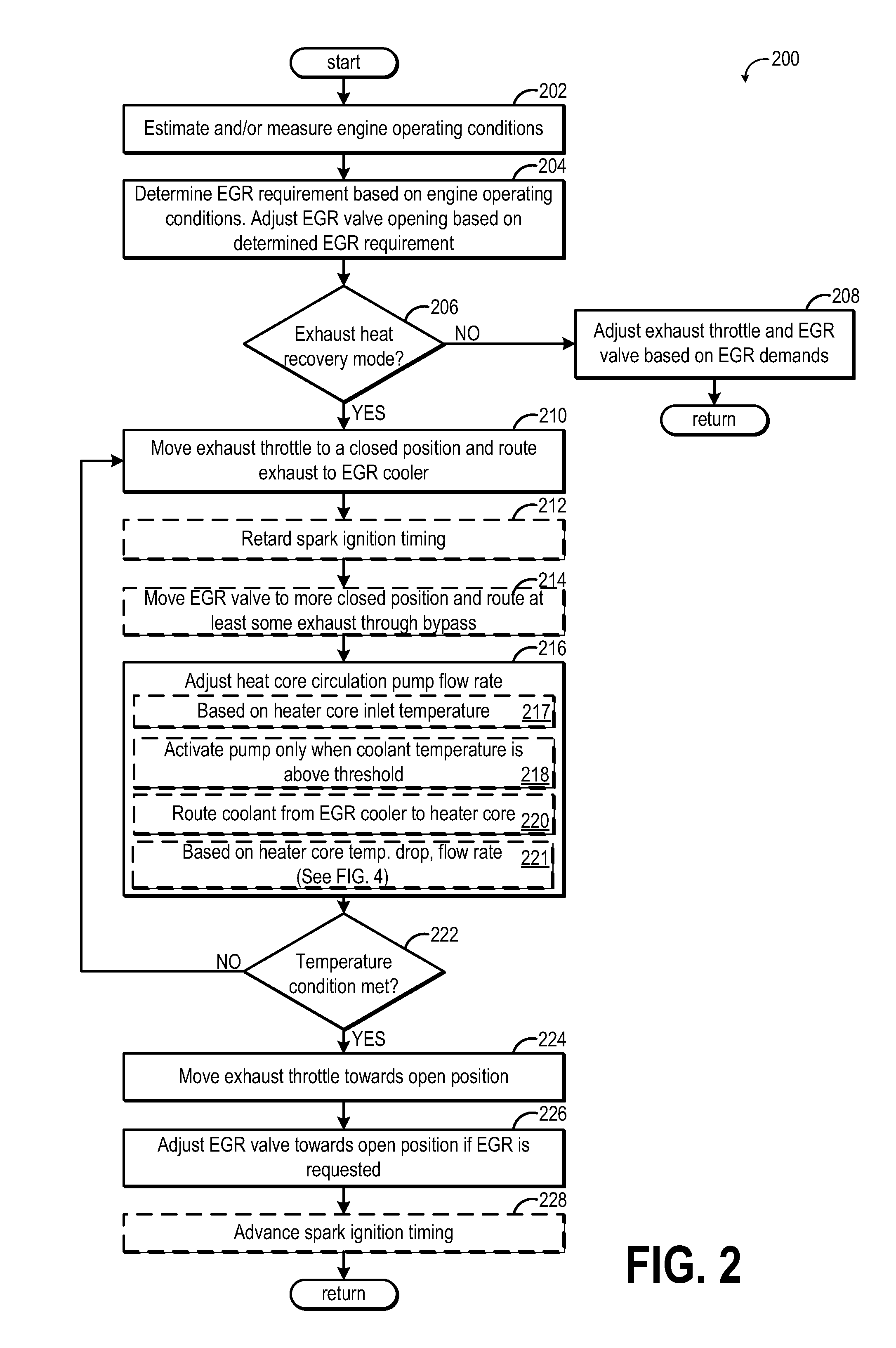Exhaust throttling for cabin heating
a cabin heating and exhaust throttling technology, applied in the field of system for heating a cabin, can solve the problems of waste of fuel and inefficient methods, and achieve the effect of promoting efficient cabin heating and maximizing heat transfer
- Summary
- Abstract
- Description
- Claims
- Application Information
AI Technical Summary
Benefits of technology
Problems solved by technology
Method used
Image
Examples
Embodiment Construction
[0012]Methods and systems are provided for expediting heater core warm-up in a vehicle engine, such as the engine system of FIG. 1. During an engine cold-start and warm-up, synergistic benefits of increased exhaust backpressure and subsequent heat rejection at an EGR cooler may be advantageously used to quickly raise coolant temperature provided to the heater core. The conventional approach to getting heat out of the exhaust and into engine coolant includes maximizing the coolant flow rate and minimizing the coolant volume (via isolating coolant branches such as the branch into the radiator).
[0013]However, in the claimed configuration, the coolant is sourced from the engine's general coolant system, passes through the heat pick up element (EGR cooler) and then passes through the heat sink (heater core), and is released into the engine's general coolant system. In this case, there is a given coolant flow rate that achieves maximum heat transfer into the heater core. That coolant flow...
PUM
 Login to View More
Login to View More Abstract
Description
Claims
Application Information
 Login to View More
Login to View More - R&D
- Intellectual Property
- Life Sciences
- Materials
- Tech Scout
- Unparalleled Data Quality
- Higher Quality Content
- 60% Fewer Hallucinations
Browse by: Latest US Patents, China's latest patents, Technical Efficacy Thesaurus, Application Domain, Technology Topic, Popular Technical Reports.
© 2025 PatSnap. All rights reserved.Legal|Privacy policy|Modern Slavery Act Transparency Statement|Sitemap|About US| Contact US: help@patsnap.com



